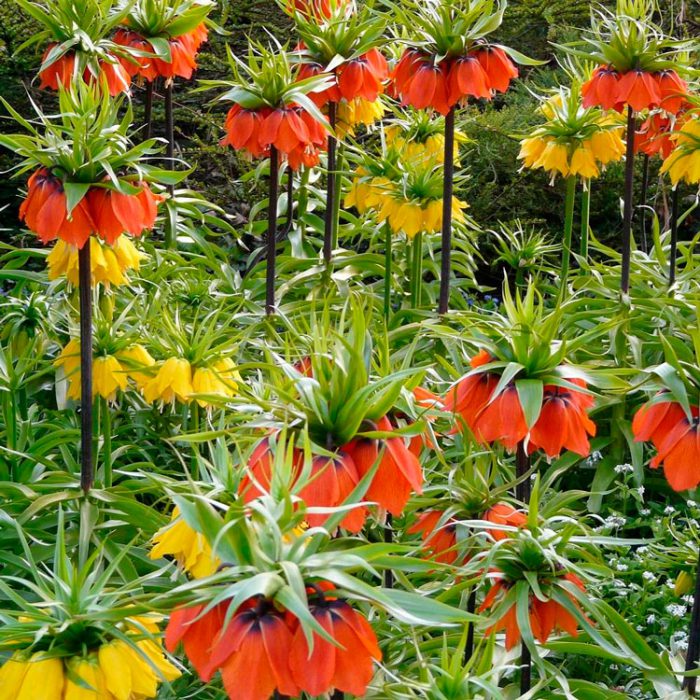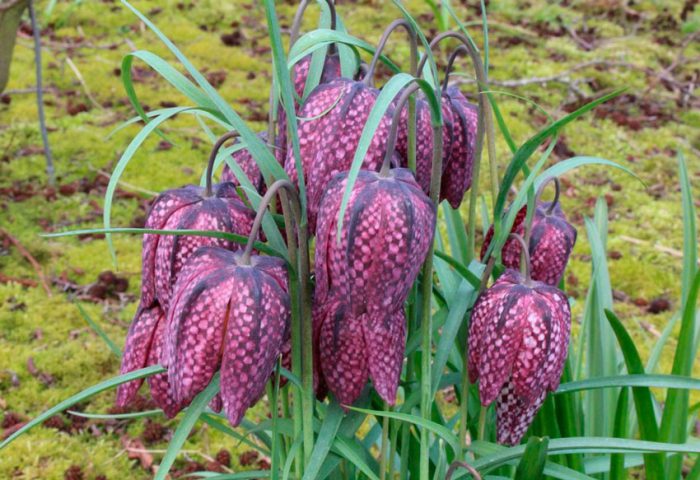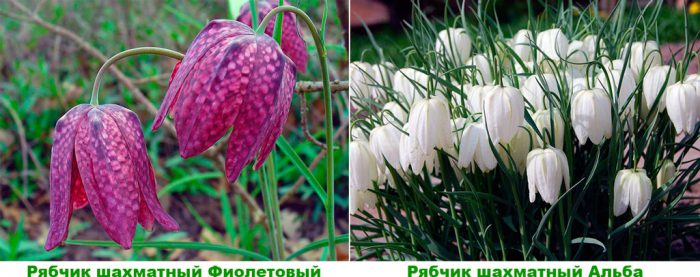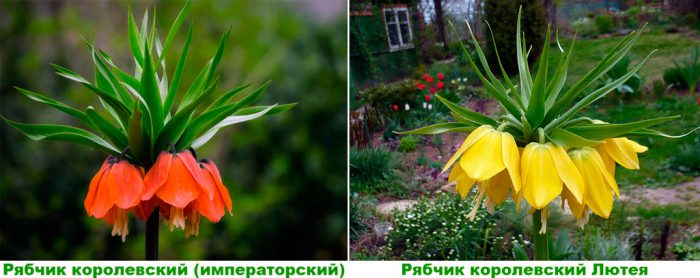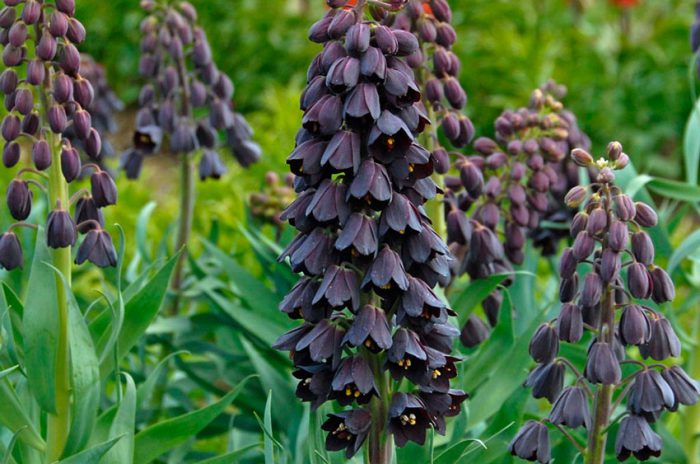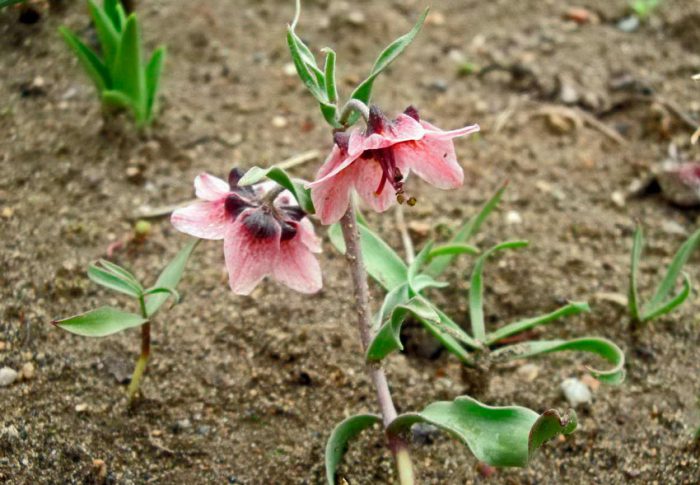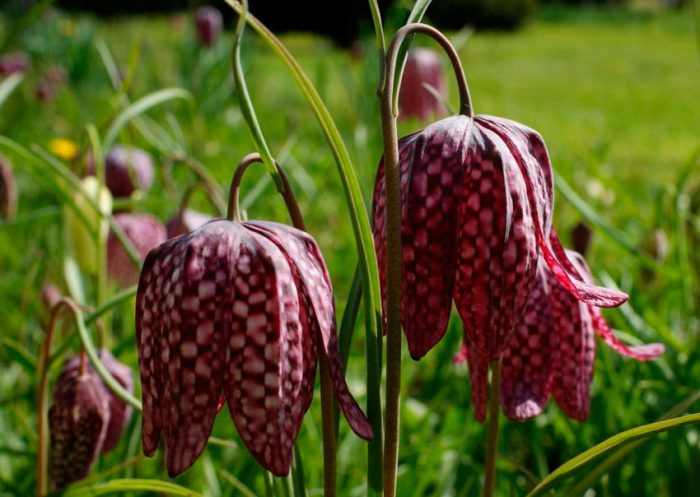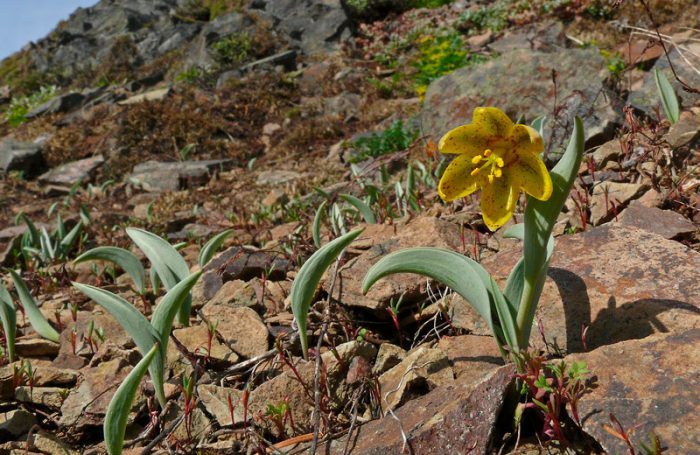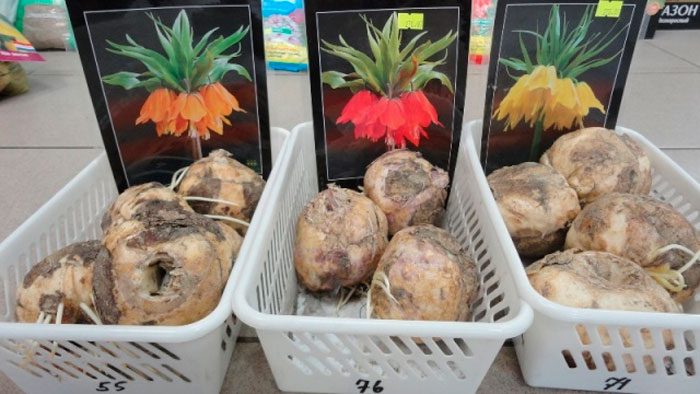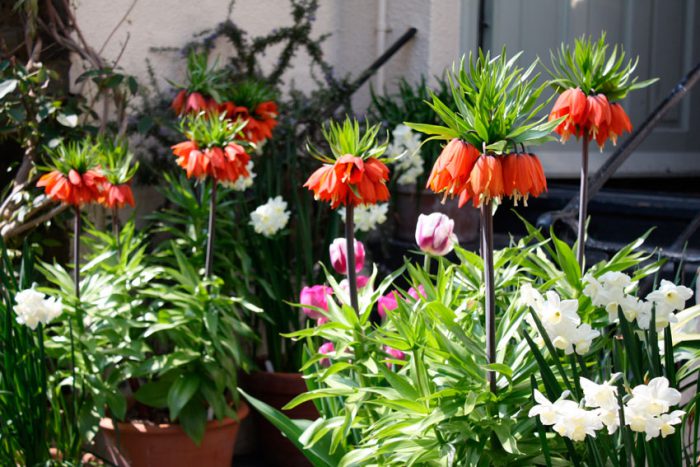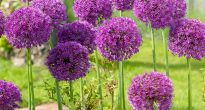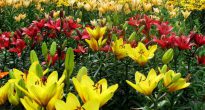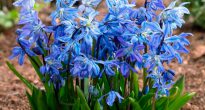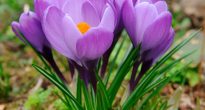Grouse, or fritillaria (Fritillaria) is a herbaceous perennial plant that is a member of the lily family. This genus includes about 150 different species. In the wild, such plants can be found in the temperate zone of the Northern Hemisphere, in Western or Eastern Asia. The name of the fritillaria flower comes from Latin from the word "fritillus", which is called a glass for throwing dice. The fact is that the flowers of hazel grouse and this glass are very similar in shape. The name hazel grouse comes from the word "pockmarked", which in Russian means "motley".
Content
Features of hazel grouse
Such plants are outwardly similar to a small palm tree, at the top of which there are spectacular flowers. They are often referred to as the “tree of paradise”. The bulbs include several fleshy and relatively wide scales, which are updated every year. There are no integumentary scales on the bulbs, and therefore, if handled carelessly, they can be very easily injured. On the ground leafy stem, there is a large number of oblong-lanceolate or narrow-linear leaf plates, which are scattered or whorled. Hanging flowers can be single or part of a panicle or umbrella-shaped inflorescence, which look very impressive due to the rich color of the perianths of purple, red, yellow or white. These plants are ephemeroids; at the base of any of the leaf plates there is a nectary, which is a round, oval or triangular depression. The fruit is a hexagonal capsule, inside of which there are many seeds; it can be wingless or winged.
Types and varieties of hazel grouse with photos and names
The classification of hazel grouses is not very simple, but all these professional subtleties are useless for a simple gardener. Below is a general overview of the most popular species and varieties in culture. Such plants are divided into 6 sections.
Section I Eufritillaria
It consists of 4 groups. In such a section, there are only those species that are native to the Mediterranean, Western Europe and Western Asia.Chess hazel grouse is the most prominent representative of this section: it has been cultivated since 1572, it was named so due to the fact that the color of the flowers is very similar to the color of the grouse. The bush reaches 0.35 m in height. Hanging bell-shaped flowers are single, very rarely 2 flowers can grow. They are brownish purple in color and have a checkerboard pattern. Such a plant is unpretentious and has many varieties and garden forms:
- Aphrodite and Alba are forms with white flowers;
- Artemis - the color of the flowers is greenish-purple;
- Jupiter - has relatively large dark red flowers.
This group also includes such species as: Caucasian hazel grouse, chess-like, mountain, Mikhailovsky, needle-petal, yellow, etc.
Section II Petilium
It includes the largest species native to Turkey, Turkmenistan, the Western Himalayas and Northeastern Iraq. A very striking representative of this section is the royal hazel grouse (today it is called the imperial hazel grouse). This species comes from Turkey, it was brought to European countries in 1580, at the moment there are about 20 different forms. A distinctive feature of this species is an unpleasant odor emanating from the bulbs, the stem in height can reach about 100 centimeters. Whorled leaf plates are broadly lanceolate. The diameter of drooping bell-shaped flowers is about 6 centimeters, they are colored orange, there are brown veins on the surface, and there is a speck of the same color at the base. Popular varieties:
- Aurora. In height, the undersized bush can reach only 0.6 m. The color of the flowers is red-orange.
- Luteya and Luteya maxim. The color of the flowers is yellow-golden. In height, the bushes can reach 1 m and 1.2 m, respectively.
- Sulferino. This option is a classic. There is a red mesh on the surface of the orange flowers.
Also in this section is Radde's hazel grouse and Edward's hazel grouse.
Section III Theresia
There is only one representative in this section, namely, Persian hazel grouse, whose homeland is Western Asia.
Section IV Rhinopetalum
This section includes species from Afghanistan and Western China such as: hazel grouse, Kamchatka and related. Popular varieties of hazel grouse related:
- Limelight. The height of the bush is about 0.6 m. On the surface of the green flowers there are specks of olive color.
- Wayne Roderick. This cultivar was created by Chinese breeders. The flowers are colored iridescent emerald brown, the tops are green, there are markings of red or brownish-black color.
Section V Korolkowia
This section contains only 1 species - Severtsov's hazel grouse. This plant is endemic to Central Asia (in the wild it can only be found there).
Section VI Liliophiza
This section includes species from North America. For example, the hazel grouse: the height of the bush is about 0.15 m, yellow-golden long flowers on the inner surface have small dots of brown color. In European countries, it is used exclusively for decorating greenhouses.
Growing hazel grouses in the garden
Next, it will be described how to grow in the garden the imperial hazel grouse, which is very popular among gardeners, or the royal hazel grouse, or the royal crown. In the middle latitudes, such a plant has been cultivated since the 16th century, but to this day a large number of gardeners are puzzling over the secret of its cultivation. The fact is that despite the efforts and efforts made to grow such a hazel grouse, it very often does not have flowers at all.
The flowering of hazel grouse begins immediately after the snow cover disappears. Its rich orange or yellow-lemon flowers, located on high peduncles, look incredibly impressive. They can be combined with any spring flowers. One adult bulb often grows 2 peduncles, while new bulbs appear at their base.As for children, very few of them are formed in this species, in this regard, the prices for them in specialized stores are relatively high.
For such a plant, it is recommended to choose a sunny area, but it is quite possible to grow it in a shaded place. A suitable substrate should be moderately moist, light and rich in nutrients. This plant also needs good drainage.
Planting hazel grouses
What time to plant
After the end of the growing season in hazel grouses, their bulbs are removed from the soil and stored in a well-ventilated and dry room. Store them until roots grow. As soon as this happens, the bulbs must be planted in open ground. As a rule, the landing time falls on the last days of August or the first days of September. During storage, remember that these bulbs do not have protective integumentary scales, so they can dry out very quickly. In this regard, you should not purchase such planting material at the late autumn sales, since, most likely, the bulbs are already dry and will not sprout. In the event that you do not have time to plant the hazel grouses in open soil in time, then the bulbs can be saved by placing them on the shelf of the refrigerator (in the vegetable compartment), having previously dipped them into moistened peat. In the event that you plant such flowers later than the last days of September, then be prepared for the fact that they are unlikely to bloom next spring. Before planting, the bulbs must be disinfected in a solution of potassium manganese, and then sprinkled with a little crushed charcoal.
Landing features
First you need to start preparing the site. It is necessary to dig it up, while introducing humus or peat into the soil. If the soil is heavy, it can be corrected by adding sand. Also, this plant will be grateful if you add ash or lime to the soil. Planting depth from the bottom is equal to 2-3 onion diameters (approximately 20-25 centimeters). The bottom of the prepared hole should be covered with a layer of sand. In the event that the soil is heavy, wet peat is taken instead of sand. After that, the bulbs must be placed in the hole with the bottom down. After the roots are neatly straightened, the hole is covered with soil. Someone considers this procedure not a landing, but a transplant.


Watch this video on YouTube
Care features
The hazel grouse is distinguished by its unpretentiousness, so caring for it will take a minimum of time and effort from the gardener, of course, this is only if the quality of flowering is not important to him. Cultivation of such a flower is recommended for novice gardeners. However, if you want the hazel grouse bush to look as impressive as possible during flowering, then this will require some effort on your part.
If the summer period is dry, then the hazel grouses will need to be watered. At the same time, remember that you must not allow excessive drying of the soil on the site. When these flowers end the growing season, they will need to be watered once every 2 or 4 weeks, because the bulbs should not be in excessively dry soil. Also, do not forget to timely feed with dry fertilizers. The first feeding is carried out in the third decade of April, for this, a nutrient mixture is used, consisting of 1 bucket of humus mixed with 1 tbsp. l. nitrophoska and the same amount of Agricola for flowering plants, 4–5 kilograms of the mixture is taken per 1 square meter, and it is distributed over the surface of the site with a layer of 40–50 mm. The second feeding is carried out after the hazel grouse has faded, for this dry fertilizer is scattered over the surface of the site, so, 1 large spoonful of potassium sulfate and superphosphate should be taken per 1 square meter. Then the area must be watered.
Every time after the plant is watered, weeds must be removed from the site.It is not necessary to loosen the soil surface, since the roots can be injured; instead, it is recommended to cover the surface of the site with a thin layer of wood ash immediately after planting, and then mulch it with humus or peat, while the layer thickness should be 30 mm.
The reasons for the lack of flowering
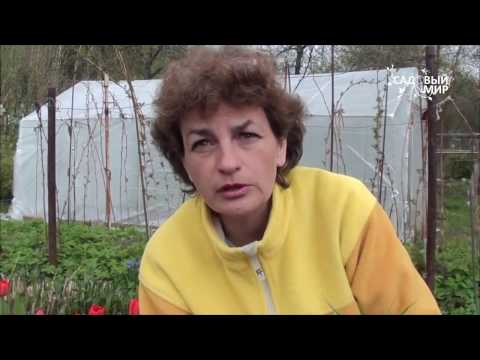

Watch this video on YouTube
There are several reasons for the lack of flowering of hazel grouses:
- The summer period turned out to be damp or rather cool. The bulbs dug out after the end of flowering are recommended to be warmed up in a natural way and this must be done before planting in open soil.
- Overly small bulbs. In the event that the diameter of the bulb has not reached 50 mm, then flowering will not occur, since all its forces will be directed to increasing the mass.
- Grouse are grown for a very long time in the same area. In the event that the bulbs are not dug up, then their active division occurs, from which their volume is noticeably reduced. In this regard, the bulbs of medium and large size must be dug out after the hazel grouses have faded, and in the autumn, they must be planted again, then next spring they will definitely bloom.
- The bulbs were incorrectly deepened during planting. If the bulbs are planted very close to the soil surface, then they will be extremely sensitive to adverse weather conditions, for example, they may rot due to heavy rains or severe frost may cause significant damage to them. If the bulbs are planted very deeply, then they will spend a lot of effort on germination and survival.
- Wrong soil. If the soil is too light, then it freezes severely in winter. A lot of liquid accumulates in clay soil, from which rot appears on the bulbs. Get the right soil for planting and be sure to drain well.
- The winter period is too frosty and practically snowless. Because of this, the bulbs simply freeze. To avoid this, you should make a good shelter for the winter. To do this, the area is covered with a layer of mulch (humus or peat), the thickness of which can be from 10 to 20 centimeters.
- When the petals die off, the ovary is preserved. In the event that you do not cut off all the ovaries in time, the onion will be busy with its development, and not with its own, and therefore it will not have time to prepare for future flowering.
Reproduction of hazel grouse
Gardeners, as a rule, resort to the vegetative method of reproduction of hazel grouses, namely, the division of bulbs. Usually 1 adult hazel grouse bulb gives only a couple of large daughter children. It should be noted that this method of reproduction is rather slow, since the separated children grow up in the open field for several years before the onset of full flowering. However, this breeding method is distinguished by its reliability and efficiency.
If you wish, you can "force" an adult bulb to form a baby. When the bulbs are dug up in the summer, you should choose the largest and absolutely healthy one. Take a sterilized instrument and in the fleshy part of the onion, make a shallow scraping, the diameter of which should be 20 mm. The wound should dry in the air without any treatment. Then it is buried in the sand (always clean and dry) and removed to a well-ventilated dry room. After it has roots in the last days of August or the first - September, it is planted in open ground, after being treated with a fungicide. All ovaries are removed, since the plant must spend energy only on the formation of children. When removing the bulb from the ground, be very careful, because small children are difficult to notice.
Only professionals on an industrial scale can grow a hazel grouse from seeds.
Grouse after flowering
When the flowering is over, for some time the hazel grouses will retain their decorative effect due to the juicy greenery, but by the beginning of July they completely lose their attractiveness. The digging of the bulbs should be started when the leaves turn yellow and dry. However, it is not worth delaying the digging, since at this time the bulbs are susceptible to attack by various pests.
The dug out bulbs must be cleaned of dried scales, washed in lukewarm water and immersed for 30 minutes. in a solution of manganese potassium pink color. Then, if necessary, specks of rot or other damage are cut out. It is necessary to treat the cut points with a fungicide and sprinkle them with wood ash. Then the bulbs are placed in a well-ventilated dry room so that their wounds dry well.


Watch this video on YouTube
How to store bulbs
Choose a well-ventilated, dry place to store your bulbs, no hotter than 30 degrees. They will be there from the first days of July until the last days of August, until the roots appear. It is necessary to regularly inspect them, which will allow timely identification of sick or rotten bulbs.

